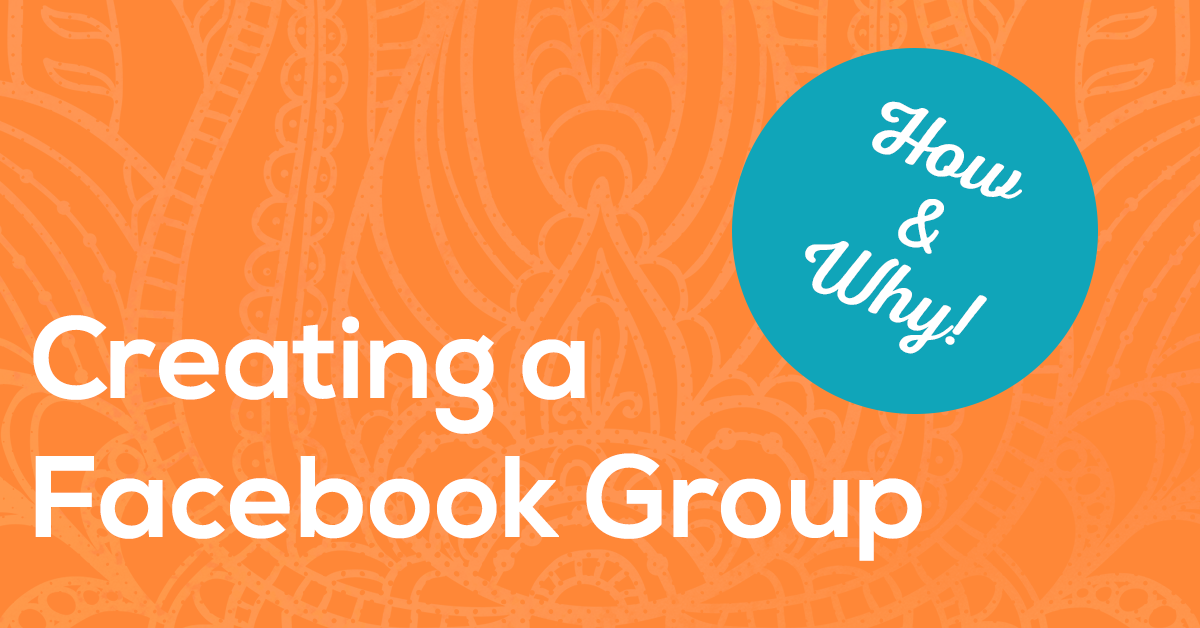If you don’t have a Facebook Group yet yourself, you’re probably a member of one (or more). Why? 6 months ago, every Facebook Page post was seen by 100 people. 3 months ago it was 50. Now it’s what, 6?
Have You Started A Facebook Group?
Groups offer many advantages over pages, for you and your customer…
- Reach won’t matter. If they are in your group, they’ll get a notification every time you post. While people can turn off notifications, many don’t know how, or will just leave if no longer interested. It’s a self-weeding list that will be much more loyal, and probably more interactive.
- It’s about conversation, not advertising. Yes, you’ll share your blog post and links to your newest service page. However, groups allow your audience to share what’s happening to them and be seen equally. That’s a huge difference, and a big step forward to truly connecting with clients. Encourage it with weekly events like “Family Friday” to share family pics or brag about a relative. Let your customers connect with you, and each other!
- Brainstorm with your audience. People see groups as a less public forum than pages, so they’re more ready to speak their minds. On a page, they may not tell you that idea you’re considering is a snoozer, but in a group they’ll nix it fast… and maybe suggest something that resonates with them!
- Guest “speakers.” if you’re into joint ventures, or just looking to bring added interest, consider inviting others from related fields into your group and highlighting them. It’s a boost for them, and potentially useful and exciting for your audience.
I could keep going. Do I really need to, though?
The Facebook Page isn’t going away just yet. It’s still entirely valuable, especially given that it shows up in search engines. That said, the best time to make hay is while the sun shines.
So, how do you get a Group going, and how do you keep people involved once they join?
This post goes over the exact step-by-step (only 5!) process of creating a group. If you haven’t already, go read that post – it opens in a new tab so you don’t lose your place here. 🙂
Once that’s done, it’s time to do some planning.
Before inviting anyone:
- What is your group about? Successful groups tend to revolve around topics that already have a following, or goals that many can relate to. What will your members get out of joining your group?
- Who is your group for? Create a detailed avatar and with each next step, ask yourself if what you’ve done will be exciting for them.
- What is your group called? You really want to finish 1 & 2 before you tackle this, and while you could change it later, try not to. Pick something clear and concise, but leave room for growth.
- Make some rules. If your group is a free-for-all at the beginning, it will probably turn into a promo-spam feed, and no one’s questions and conversations will be seen. Even if you don’t like rules, make a couple of basic, easy ones. Groups without rules end up resembling the Wild West, or 3am infomercials.
- Prepare content ahead of time. Be strategic, and try to plan your posts at least a week ahead of time. People like structure, so have set days for “events” within to the group for members to look forward to. Tuesdays are Tech Tips, Fridays are New Fan Fridays for sharing social links, etc.
Things change, and anything you decide now can absolutely change as your group grows. Having these points laid out before you start, however, will help you hit the ground running.
Action Steps for Growing Your Group
- Share the group with your email list – as its own email. Sound obvious? You’d be surprised how many forget to do this, or just drop a single sentence at the end of a promo email.
- Add a link to your group to the welcome emails and thank you pages of your funnels and opt ins. Add a link to your blog post signature. They’re already interested – get them invested in your community.
- Give members a name. For example, a group called Automate and Thrive could refer to members as Thrivers. This can help instill a sense of connectedness with the community.
- Make a list of influencers in your niche. Consider doing Q&A sessions with these people in the group to get them in and engaged.
- Create members-only content. You can upload these into the Files section of your group, along with resource lists. This creates a feeling of exclusivity – people like feeling special!
- Extend outside of Facebook. One of my favorite ways to do this is with group Pinterest boards, and Twitter chats are great, too. These are more publicly visible, and can draw great attention – and new members.
- ENGAGE! You have to actively talk with your members. Don’t just wait for others to post, make posts yourself. When others do post and comment, respond! If you don’t care about your group, no one else will, either.
Sound like a lot of work? It is.
You’ll need to devote time to your Facebook Group, and you may want to bring on a Virtual Assistant to help. In addition to conversations, you’ll want to ensure spam is moderated and invited users are granted access.
The trade off can be absolutely mind-blowing, though. You can cultivate amazing relationships, and yes, get new clients.

